Health FAQ

How do I pick a health plan?
If your employer gives you a choice of plans or you need to purchase your own coverage, it is crucial that you understand your health insurance choices and pick the insurance that is best for you and your family.
Here are some questions you should ask yourself when choosing a health insurance plan:
How affordable is the cost of care?
• What is the monthly premium I will have to pay?
• Should I try to insure most of my medical expenses or just the large ones?
• What deductibles will I have to pay out-of-pocket before insurance starts to reimburse me?
• After Iíve met my deductible, what percentage of my medical expenses are reimbursed?
• How much less am I reimbursed if I use doctors outside the insurance companyís network?
Does the insurance plan cover the services I am likely to use?
- Are the doctors, hospitals, laboratories and other medical providers that I use in the insurance companyís network?
- If I want to use a doctor outside the network, will the plan permit it?
- How easily can I change primary-care physicians if I want to?
- Do I need to get permission before I see a medical specialist?
- What are the procedures for getting care and being reimbursed in an emergency situation, both at home or out of town?
- If I have a preexisting medical condition, will the plan cover it?
- If I have a chronic condition such as asthma, cancer, AIDS or alcoholism, how will the plan treat it?
- Are the prescription medicines that I use covered by the plan?
- Does the plan reimburse alternative medical therapies such as acupuncture or chiropractic treatment?
- Does the plan cover the costs of delivering a baby?
What is the quality of the insurance plan I'm looking at?
- How have independent government and non-government organizations rated the plan? For example, the National Committee for Quality Assurance ( http://www.ncqa.org ) issues a Consumer Assessment of Health Plans (CAHPS) report for every medical plan and facility.
- What kind of accreditation has the plan received from groups such as NCQA or the Joint Commission on Accreditation of Healthcare Organizations (JCAHO) ( http://www.jcaho.org )?
- How many patient complaints were filed against the plan last year and how many were upheld by state regulatory agencies like the state insurance commission or the state medical licensing board?
- How many members drop out of the plan each year? State insurance departments keep track of ìdisenrollment rates.
- Do the doctors, pharmacies and other services in the plans offer convenient times and locations?
- Does the plan pay for preventive health care such as diet and exercise advice, immunizations and health screenings?
- What do my friends and colleagues say about their experiences with the plan?
- What does my doctor say about his or her experience with the plan?
ALL RIGHTS RESERVED – Insurance Information Institute, Inc.
How can I insure against loss of income?
If you were disabled and unable to work as a result of an accident or illness, what would you and your family do for income?
Disability income insurance, which complements health insurance, can replace lost income. At age 40, the average worker faces only a 14 percent chance of dying before age 65 but a 21 percent chance of being disabled for 90 days or more.
Three basic ways to replace income
1. Employer-paid disability insurance
This is required in most states. Most employers provide some short-term sick leave. Many larger employers provide long-term disability coverage as well, typically with benefits of up to 60 percent of salary lasting from five years to age 65, and in some cases extended for life.
2. Social Security disability benefits
This can be paid to workers whose disability is expected to last at least 12 months and is so severe that no gainful employment can be performed.
3. Individual disability income insurance policies
Other limited replacement income is available for workers under some circumstances from workers compensation (if the injury or illness is job-related), auto insurance (if disability results from an auto accident) and the Department of Veterans Affairs.
For most workers, even those with some employer-paid coverage, an individual disability income policy is the best way to ensure adequate income in the event of disability. When you buy a private disability income policy, you can expect to replace from 50% to 70% of income. Insurers wonít replace all your income because they want you to have an incentive to return to work. However, when you pay the premiums yourself, disability benefits are not taxed. (Benefits from employer-paid policies are subject to income tax.)
Key things to look for when you shop around
1. The definition of disability
Some policies pay benefits if you are unable to perform the customary duties of your own occupation. Others pay only if you are unable to perform any job suitable for your education and experience. Some policies define disability in terms of your own occupation for an initial period of two or three years and then continue to pay benefits only if you are unable to perform any occupation. “Own occupation” policies are more desirable, but more expensive.
2. Benefit period
The benefit period is the amount of time you will receive monthly benefits during your life. Experts usually recommend that the policy you buy pay you benefits until at least age 65, at which point Social Security disability will take over. If you are young, you may consider buying a policy offering lifetime benefits because it will still be relatively inexpensive.
3. A policy that will replace from 60% to 70 % of your total taxable earnings
A higher replacement percentage, if available, is more expensive. Evaluate your other sources of income before deciding how much disability coverage you need.
4. Coverage for disability resulting from either accidental injury or illness
An accident-only policy is less expensive but does not provide adequate protection. Ideally, both accident and illness coverage should be purchased.
5. A cost-of-living increase in benefits
You are buying a policy today that may not pay benefits for a decade or more. Should you need those benefits, you will want them to have kept pace with increases in the cost of living. (Some companies also offer “indexed” benefits, keeping pace with inflation after benefit payments begin.)
6. A policy paying “residual” or partial benefits
This type of policy is available so that you can work part-time and still receive a benefit making up for lost income. A standard feature in some policies, and added by a rider to others, a residual benefits policy pays partial benefits based on loss of income without an initial period of total disability.
7. Transition benefits
Offered by some companies, it can offset financial loss during a post-disability period of rebuilding a business or professional practice.
8. Ongoing coverage
A non-cancelable policy which will continue in force as long as the premiums are paid; neither the benefit nor the premium can change. A guaranteed renewable policy keeps the same benefits but may cost more over time since the insurer can increase the premium if it is increased for an entire class of policyholders.
9. Financial stability
Check the financial ratings of an insurer. Your insurance agent or company representative will provide this information or you can obtain it from rating agencies such as A.M. Best Company, Standard and Poor’s, Duff and Phelps Credit Rating Company and Moodyís Investors Service.
10. Waiting period
Every disability policy imposes a waiting period, also known as the elimination period. This is the number of days you must be disabled before receiving benefits. If you are disabled during the elimination period, you will not receive any benefits, even though you are not able to work. If the elimination period is short, such as 30 or 60 days, the premium will be higher. A longer elimination period may strain your finances more when you need it, but you will be charged a lower premium. Most experts recommend that you select an elimination period of 60 to 90 days. The first check is usually paid 30 days after the waiting period.
ALL RIGHTS RESERVED – Insurance Information Institute, Inc.
